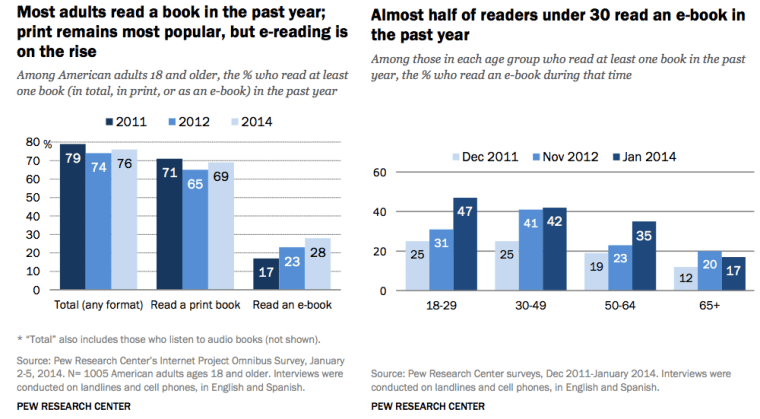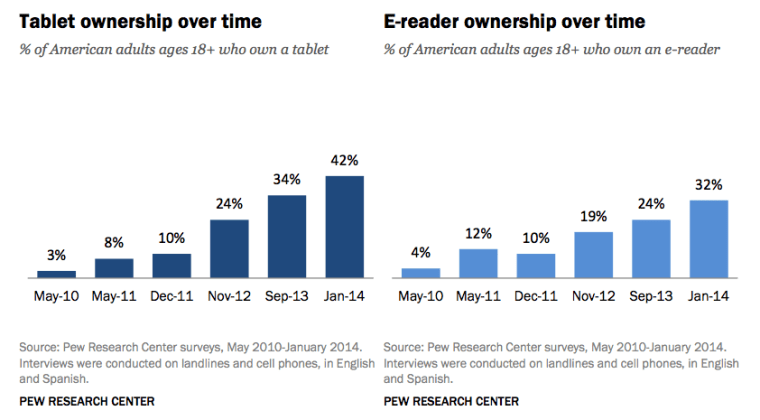E-books are more popular than ever, according to a new survey by Pew Research Center — but print books still reign supreme, even among the younger "digital natives" to whom one might think paper media would seem old-fashioned.
Amazingly, 73 percent of respondents aged 18-29 read print books in the last year — more than any other age group! That print is so tenacious even among the likes of Twitter and smartphone users may come as something of a surprise, but as media consultant Michael Morris explains, we can't assume e-readers are for everyone.
"We can't just look at e-books as if they're these magical things that will appeal to everyone," Morris explained in a phone interview with NBC News. "There are various entry barriers such as cost, and there are plenty of people who don't have Internet access in their homes."
In the meantime, a paperback works as well today as it did 50 years ago — and as it will 50 years in the future. Morris bets that paper books will be around for a long time yet for the same reasons they've survived so far: low cost, no power required, easy to gift — they're even recyclable.
"Even some people who have access to all these digital toys are going to stick to print for incredibly boring reasons," Morris continued, giving the example of someone who just likes the feel of books or who can't fit a tablet in their purse.
Still, Pew's survey of just over a thousand American adults found that in almost every demographic, more e-books are being read than ever: Twenty-eight percent of all respondents had read an e-book in the last year, compared with 23 percent in 2012 and 17 percent in 2011. Yet the the average number of books read per person (five) did not change, nor has it for years. How is that possible?

The answer is that people are using both. If someone only read books in print last year, but recently branched out and now reads on a new e-reader they bought as well, that means that the number of people reading print books today has stayed the same but the number of e-reader users has gone up by one.
That helps make sense of the seemingly contradictory fact that readers aged 18-29 are adopting e-books faster than any other age group (nearly half read one last year), yet read more print books too. They're multi-modal, reading books wherever it's most convenient: the smartphone, the tablet, the dedicated e-reader, and of course the paperback, all have their place.

In fact, every e-book platform grew significantly over the last few years, with the exception of laptops and desktops. The profusion of tablets and smartphones combined with the falling price of e-readers and the e-books themselves has made it far easier for readers of every age to try it out. As you can see in the chart above, nearly a third of Americans own an e-reader, more have tablets, and both numbers are increasing steadily.
Women read more across the board: 10 percent more reported reading both print and e-books. Apart from gender, the biggest demographics affecting reading are education level and income. Those without a college education, or whose household brings in less than $30,000, read significantly fewer books, though the reasons (lack of reliable Internet access, no time, little dispensable income) were not looked into by the Pew survey.
With prices continuing to drop and e-books reaching more markets and genres than ever, it's logical that the next study will show even greater adoption of e-books. But as before, print will likely remain as the reliable standby for decades to come.
Devin Coldewey is a contributing writer for NBC News Digital. His personal website is coldewey.cc.
